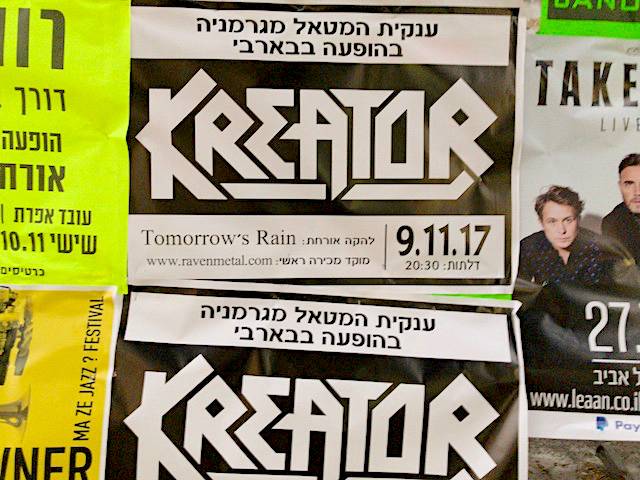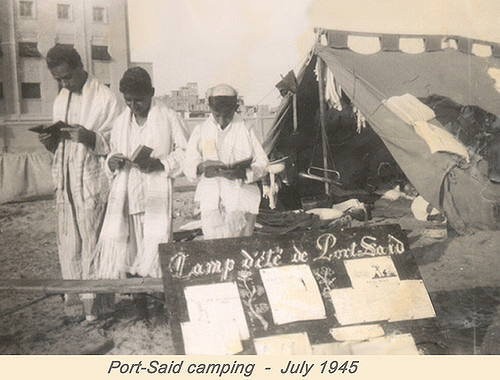Israel’s Deputy Foreign Minister, Danny Ayalon, is a diplomat whose chief skill is creating tensions, rather than defusing them. Now he’s taken a video originally produced in Hebrew for the YESHA Council (the leading lobbying group in Israel for the West Bank settlers) and imposed his own image speaking in English. The script is an almost direct translation.
The point of the video is to establish that the West Bank is not “occupied” but “disputed territory,” and that Israel’s settlements there are legal.
Ayalon does this through a selective reading of history, mixed with serious distortions.
Ayalon’s case is this:
In 1917, the “Balfour Declaration” recognized the Jewish people’s right to their homeland in Palestine. The League of Nations Mandate in 1922 subsequently affirmed that the entire Mandate was covered under that statement, so the Jewish people were actually entitled, initially, to what would become Jordan as well.
After years of settlement and growing conflict, the United Nations, reaffirming the League of Nations recognition of Jewish rights, came up with a plan to further partition the section of Palestine that had been sliced off of Jordan into two states, one Jewish, one Arab.
The Jews accepted this compromise, which has no legal power, but the Arabs rejected it and tried to destroy the fledgling Jewish state. The war ended with Israeli independence and cease-fire lines that were clearly not to be construed as final borders. At that time, Jordan occupied the West Bank. However, other Arab states did not recognize Jordanian sovereignty over the area.
Then, in 1967, Jordan joined a war launched by Egypt and Syria to destroy Israel, and Israel captured the West Bank. UN Security Council Resolution 242 called for a negotiated Israeli withdrawal to “secure and recognized boundaries,” i.e. “defensible borders.”
Because Jordan never had any right to the territory, and there had never been an independent Palestinian state, the last legitimate claim to the West Bank was Israel’s, dating back to the League of Nations Mandate, via the Balfour Declaration. Therefore, there is a dispute over the land, but Israeli settlement is legal and the territory is not considered occupied under the law.
It sounds reasonable, and for a time it worked. But this old line has lost all credibility with anyone who has even a passing knowledge of history, and isn’t making their living by willfully distorting it. Ayalon, being in the latter group and having no acquaintance with the former, manages not only to deliver this piece of blatant propaganda with a straight face, but places his personal stamp of arrogance and condescension on it, as well.
Since you might find yourself having to argue these points with someone in your church, synagogue, or local café, let’s address the myths put forth here.
Bottom line: Is the West Bank occupied? Ayalon cites the very few legal “experts” who claim that the West Bank is not occupied.
Who says otherwise? The UN Security Council and the International Committee of the Red Cross both officially call the territories “occupied.” Former Israeli Prime Minister Ariel Sharon famously referred to the “occupation.” And, perhaps most telling, the Israeli High Court of Justice ruled, in 1979, that the West Bank was under occupation, and again in 2005 stated that “…Judea and Samaria areas are held by the State of Israel in belligerent occupation.”
Did the Balfour Declaration and the Mandate promise a Jewish state in all of Palestine? No. The Balfour Declaration said that Britain viewed “…with favour the establishment in Palestine of a national home for the Jewish people, and will use their best endeavours to facilitate the achievement of this object.” In no way does this promise all of Palestine, much less Palestine and Jordan, to what would become Israel. Almost immediately thereafter, the League of Nations partitioned off the area that would become Jordan, and soon after that began waffling about allowing Jewish immigration to continue unchecked.
Nothing in the Balfour Declaration or the Mandate gives Israel any claim to any specific part of Palestine. It merely promises that somewhere in there, a Jewish “national home” will be established.
Was the Partition Plan of 1947 legally binding, and what about the fact that the Zionist movement accepted it while the Arabs did not? No, the Partition Plan was not legally binding. Only Security Council Resolutions have the force of international law, not those of the General Assembly, which that resolution was. Still, the fact that most world powers supported the resolution and it was passed with a clear majority was important.
Politically, the Arab states (we do well to remember that by 1947, there was essentially no representation of specifically Palestinian voices in any of these matters) found it impossible to accept a plan that gave 55% of the land to 30% of the population, the Jews. There was enormous popular hostility to the creation of Israel, throughout the Arab world. It was widely seen as an imperialist/colonialist project.
The Zionists accepted the plan, and, in the aftermath of the war ended up controlling 78% of Palestine. As Ayalon points out, that territory’s boundary was an armistice line, not recognized borders, and this was at Arab insistence, as they had no intention of recognizing Israel or acceding to anything that would help it become a full-fledged sovereign state. This changed over the years in practice. An official offer of recognition from the entire Arab League has been on the table for almost a decade.
Was there ever a Palestine? There has never been an independent state of Palestine. It’s also true that Jordan had no legal authority over the West Bank between 1949 and 1967. That does not mean Israel has a claim to that land. It also does not mean, as Ayalon implies, that the land cannot fall under the law of military occupation. It can, and as nearly every international law expert agrees, it does.
Israel was attacked in 1967. Doesn’t that change things? Actually, no. For one thing, Security Council Resolution 242 states that it emphasizes “the inadmissibility of the acquisition of territory by war and the need to work for a just and lasting peace in which every State in the area can live in security.” That inadmissibility does not make exceptions for defensive wars.
It’s also worth noting that Israel launched the first attack. True, there had been skirmishes with Syria for quite some time before the war, and Egypt was certainly rattling its saber. There might have been an attack on Israel, there might not, and indeed statements like this from Menachem Begin certainly raise serious doubts. But the threats certainly were liable to lead to what Israel called a pre-emptive strike, and they did. Nonetheless, that doesn’t make it a definitively defensive war. And, even if it did, it wouldn’t give Israel any more right to capture more territory.
What’s Ayalon trying to accomplish here? Ayalon is trying to justify his government’s refusal to begin negotiations from the 1967 borders (or, if good old Danny prefers, the 1949 Armistice Lines) and its nonsense about “defensible borders” (since the ones Israel defended in 1967 by destroying three armies in 6 days with nowhere near the advantages it has today obviously were not defensible).
This article is a co-publication of Souciant and Babylon Times. Photograph by Joel Schalit.






A great answer to Israel’s hasbaraganda master, Danny Ayalon
Ayalon, speaking for Israel: [1948] “cease-fire lines that were clearly not to be construed as final borders.” so Israel has no “right” to any territory merely because it is bounded by the GREEN LINE, A MERE CEASE-FIRE LINE. If there is no peace soon, I think the world should vomit Israel out, and take the non-boundary-ness of the green line seriously. The settlers who have been living in OPTs for (some of them) almost 40 years have no legal right to call that place home; and those who have been living in “Israel” since 1948 have only about 20 years longer history in the land. Not much. The way Israel is holding on reminds me of Qadafi.